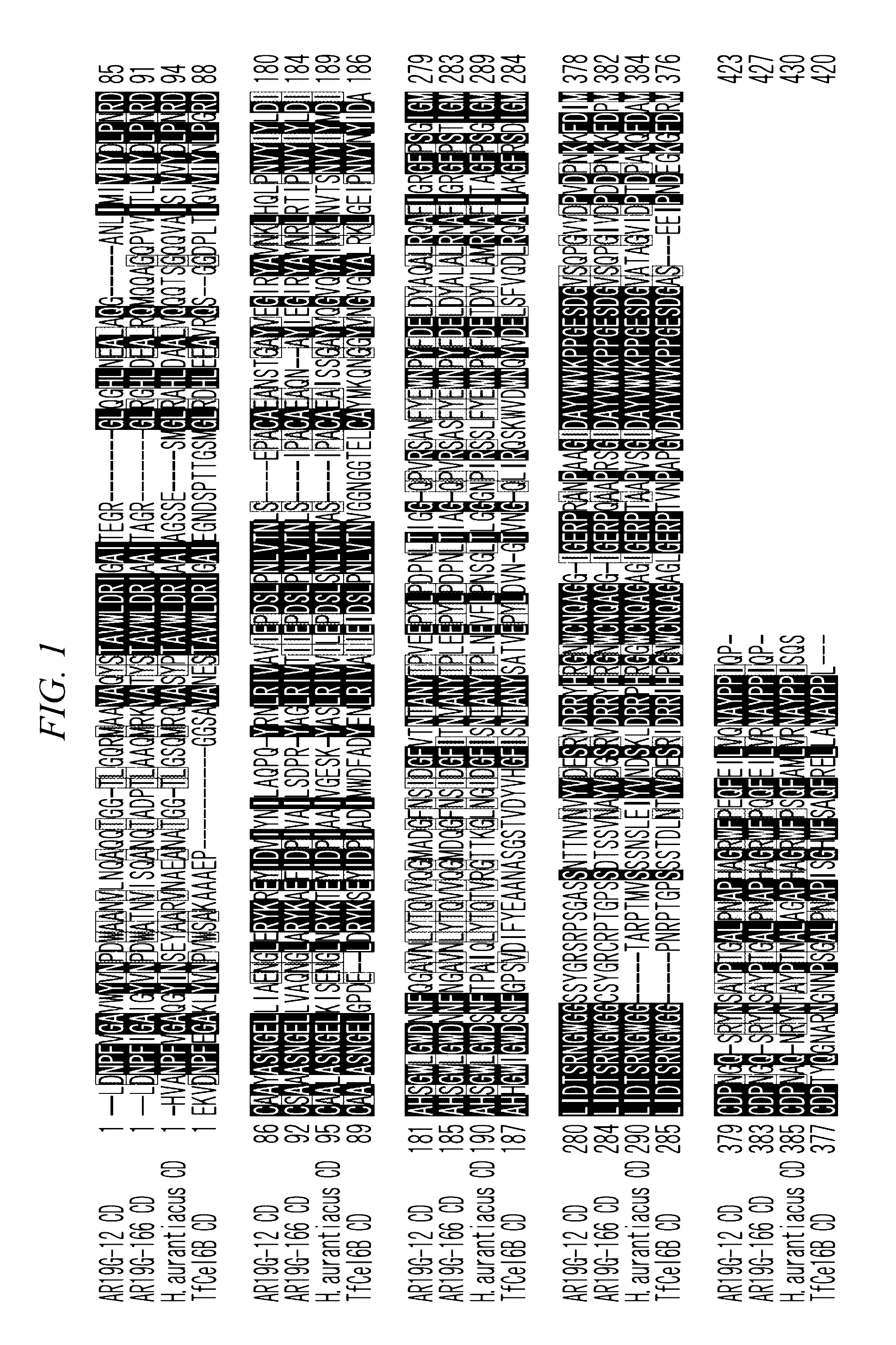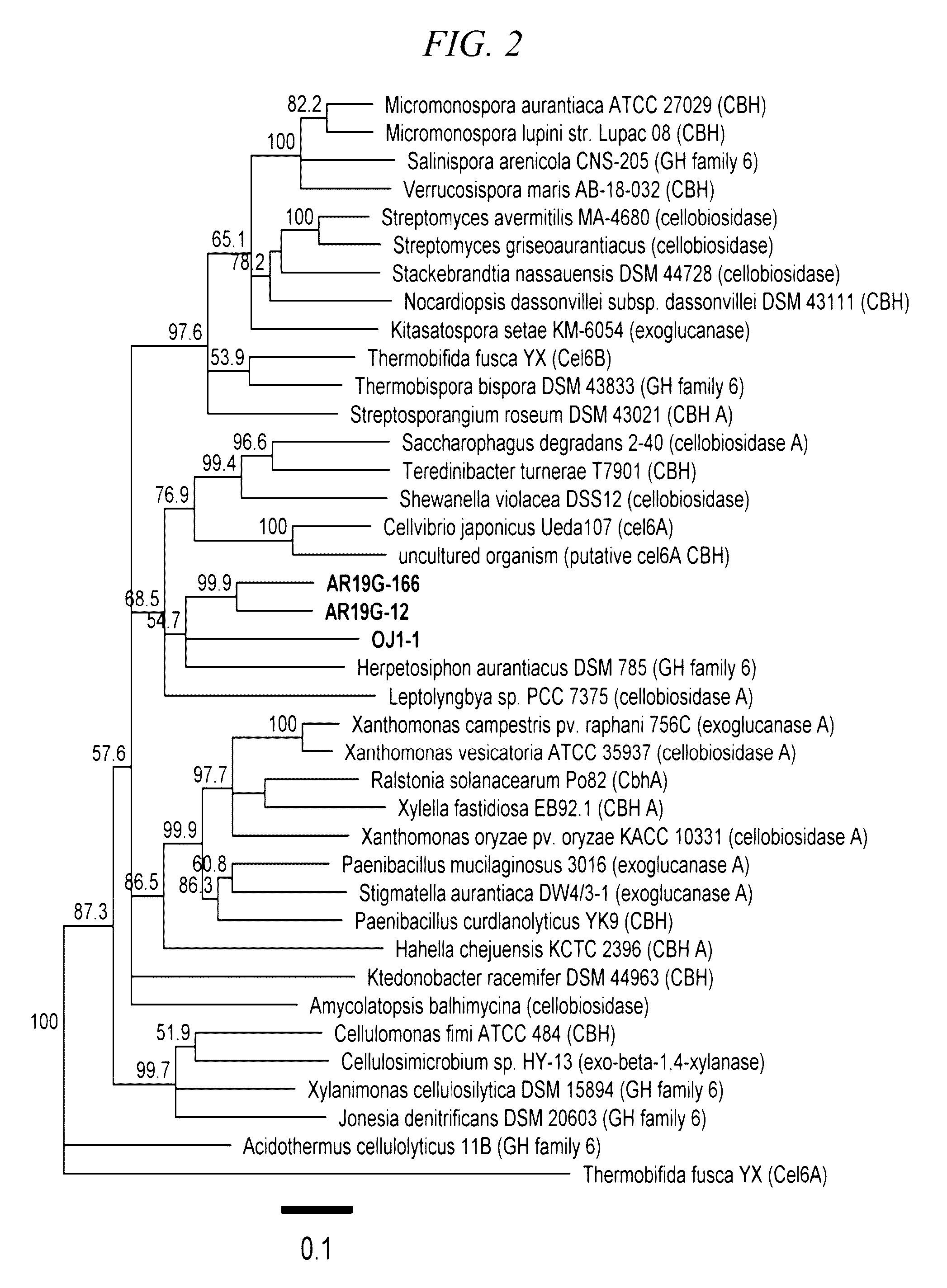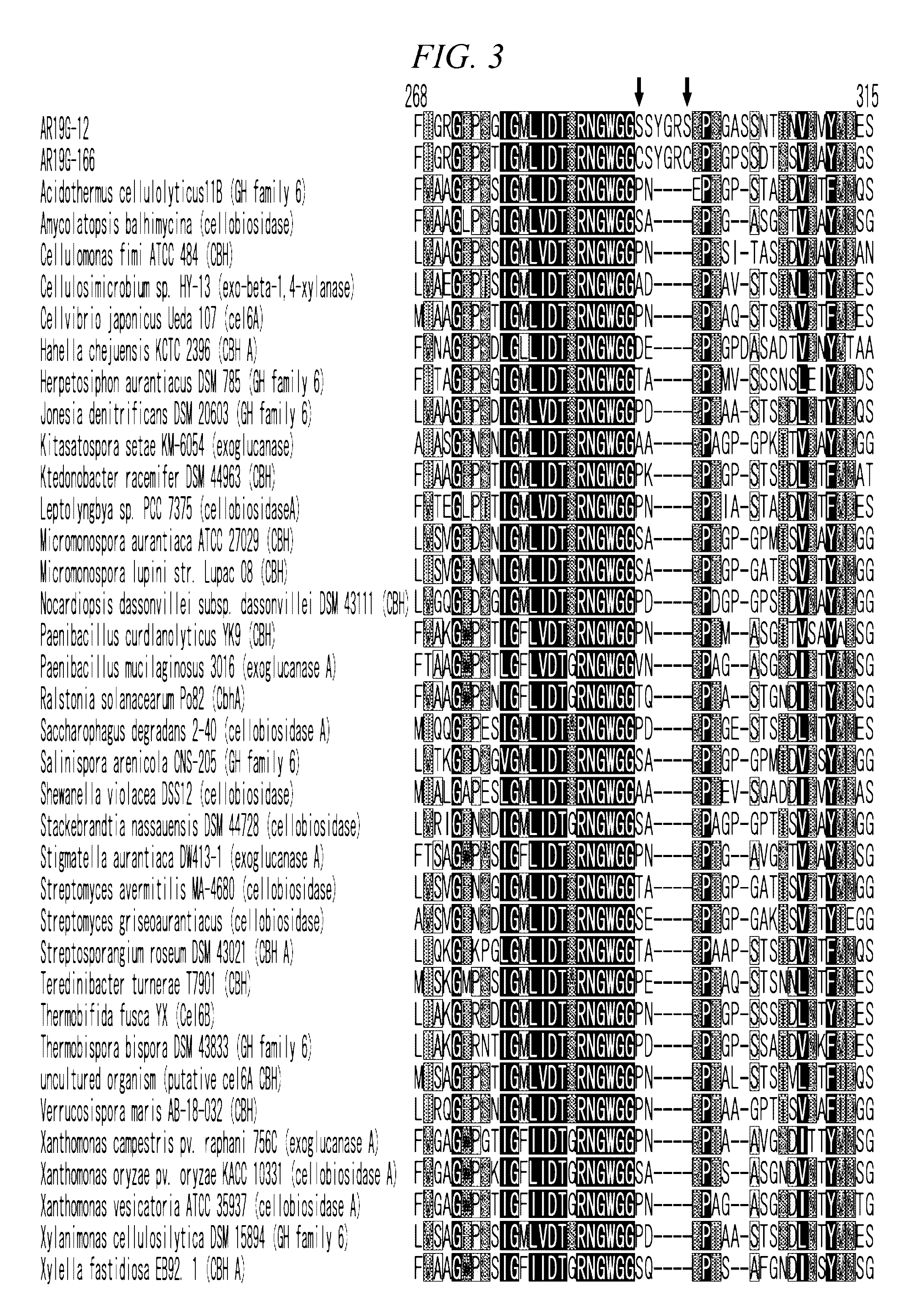Thermostable cellobiohydrolase and amino acid substituted variant thereof
a cellobiohydrolase and amino acid substitute technology, applied in hydrolases, enzymes, biochemical equipment and processes, etc., can solve the problems of complex structure of lignocellulose, insufficient thermostability of thus obtained mutant cellobiohydrolase, and difficult degradation or hydrolysis with a single enzym
- Summary
- Abstract
- Description
- Claims
- Application Information
AI Technical Summary
Benefits of technology
Problems solved by technology
Method used
Image
Examples
example 1
Cloning of a Novel Thermostable Cellobiohydrolase from Hot Spring Soil
DNA Extraction from Hot Spring Soil and Whole Genome Sequence (WGS)
[0109]Soil DNA was collected from neutral to weakly alkaline hot springs for the sake of gene search of thermostable cellobiohydrolases (optimum temperature: 55° C. or higher) and extremely thermostable cellobiohydrolases (optimum temperature: 80° C. or higher), and the sequencing of metagenomic DNA of the microbial flora that make up these soil was carried out.
[0110]As neutral to weakly alkaline hot spring soil samples, soil, mud and a hot spring water containing microbial mats were collected from 5 points (metagenomic DNA samples N2, AR19, AR15, OJ1 and H1) at 3 locations in Japan where high temperature hot springs were spouting in the field. The temperature was in a range from 58 to 78° C. and the pH was in a range from 7.2 to 8 at the time of collection of these hot spring soil samples.
[0111]DNA was extracted from 10 g of each of the collected...
example 2
[0204]As a means to produce the thermostable cellobiohydrolase according to the present invention in large quantities at a lower cost, the expression of the aforementioned protein in the actinomycete cells into which the AR19G-12L1 gene had been introduced was examined.
Production of Actinomycete Cells Introduced with AR19G-12L1 Gene
[0205]The AR19G-12L1 gene cloned into the pET101 / D-TOPO vector (manufactured by Life Technologies Inc.) was used as a template and transferred into an actinomycete expression vector pHSA81 (Japanese Unexamined Patent Application, First Publication No. 2007-53994) by PCR to be transformed into Streptomyces lividans TK24 strain. The transformation was carried out in accordance with the method (protoplast polyethylene glycol fusion method) described in “Genetic manipulation of Streptomyces: a laboratory manual”. After the selection of positive clones by colony PCR and incubation in an YEME medium (0.3% yeast extract, 0.5% Bacto peptone, 0.3% malt extract, 1...
PUM
| Property | Measurement | Unit |
|---|---|---|
| threshold temperature | aaaaa | aaaaa |
| temperature | aaaaa | aaaaa |
| temperature | aaaaa | aaaaa |
Abstract
Description
Claims
Application Information
 Login to View More
Login to View More - R&D
- Intellectual Property
- Life Sciences
- Materials
- Tech Scout
- Unparalleled Data Quality
- Higher Quality Content
- 60% Fewer Hallucinations
Browse by: Latest US Patents, China's latest patents, Technical Efficacy Thesaurus, Application Domain, Technology Topic, Popular Technical Reports.
© 2025 PatSnap. All rights reserved.Legal|Privacy policy|Modern Slavery Act Transparency Statement|Sitemap|About US| Contact US: help@patsnap.com



